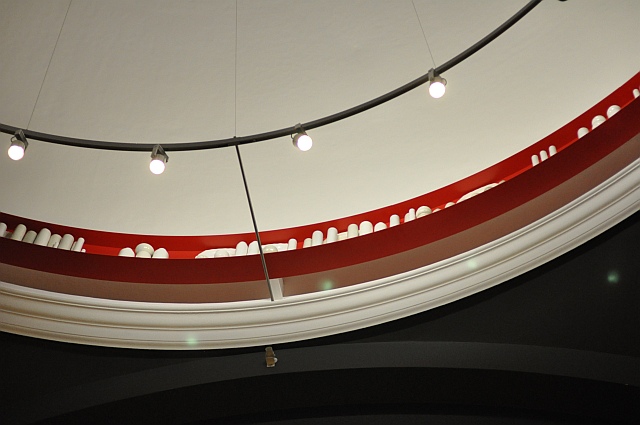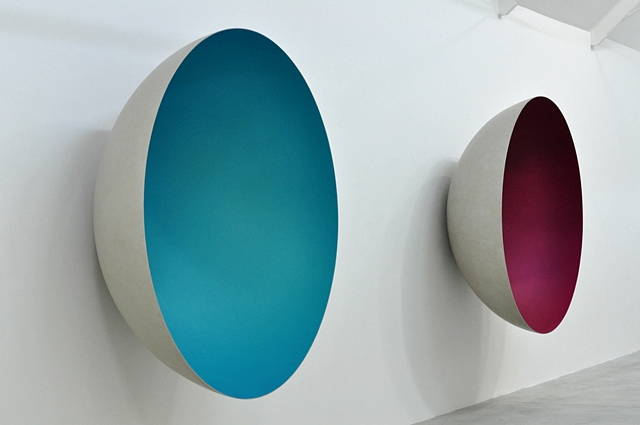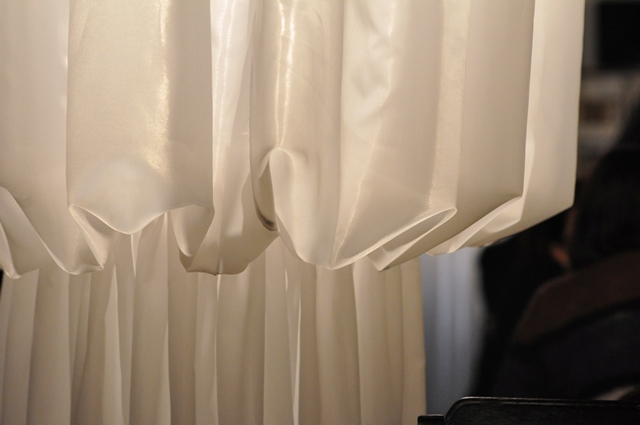The hare with amber eyes has been following me for some time now. The book is going to be a separate post, I hope, but now I wanted to write about “Signs & Wonders”, Edmund de Waal’s installation at the V&A. I’ve been intrigued about it for the longest time and in a way it will always be intriguing – it’s impossible to look at it closely, impossible to examine and study it. It has a most unusual placement: when you enter the V&A, before you even reach the space where tickets are sold, raise your eyes and there it is: in a dome 15 (?) metres above you there is a glimpse of a red band of metal, a circular shelf, you realise, full of ceramic dishes in subtle beiges and celadons. It’s witty, surprising and tactful (a word de Waal expounds upon, fascinatingly, in his School of Life lecture, also in relation to the installation I’m writing about – watch his “Sunday sermon” here). De Waal is very interested in the idea of the vitrine, a vessel for vessels – in this case the red aluminium shelf attracts the eye in an almost aggressive way, which is an interesting contrast to the visual murmur of the ceramic pieces.
But yes – the unreachability of it all! That was my first visit to the V&A, so I had to walk around it for a considerable amount of time, increasingly tired and distracted with all the other lovely things that are on display there, to try and find the best angle to see “Signs & Wonders”. In the end, when I did finally reach a good place and craned my head to see, it was very restful – a collection of understated shapes, an elegant echo of the riot of forms and colours that I saw in the rest of the museum. It seems this is precisely what de Waal intended: on the plaque on the wall you can read his statement on the piece, saying: “I’d look hard at some part of the collection, then look away and then make the after-image. It was a kind of distillation”. This is exactly how it works – it’s an essence, a reflection on what the V&A is. Very happy to have finally seen this.

Edmund de Waal’s “Signs & Wonders” at the V&A.







